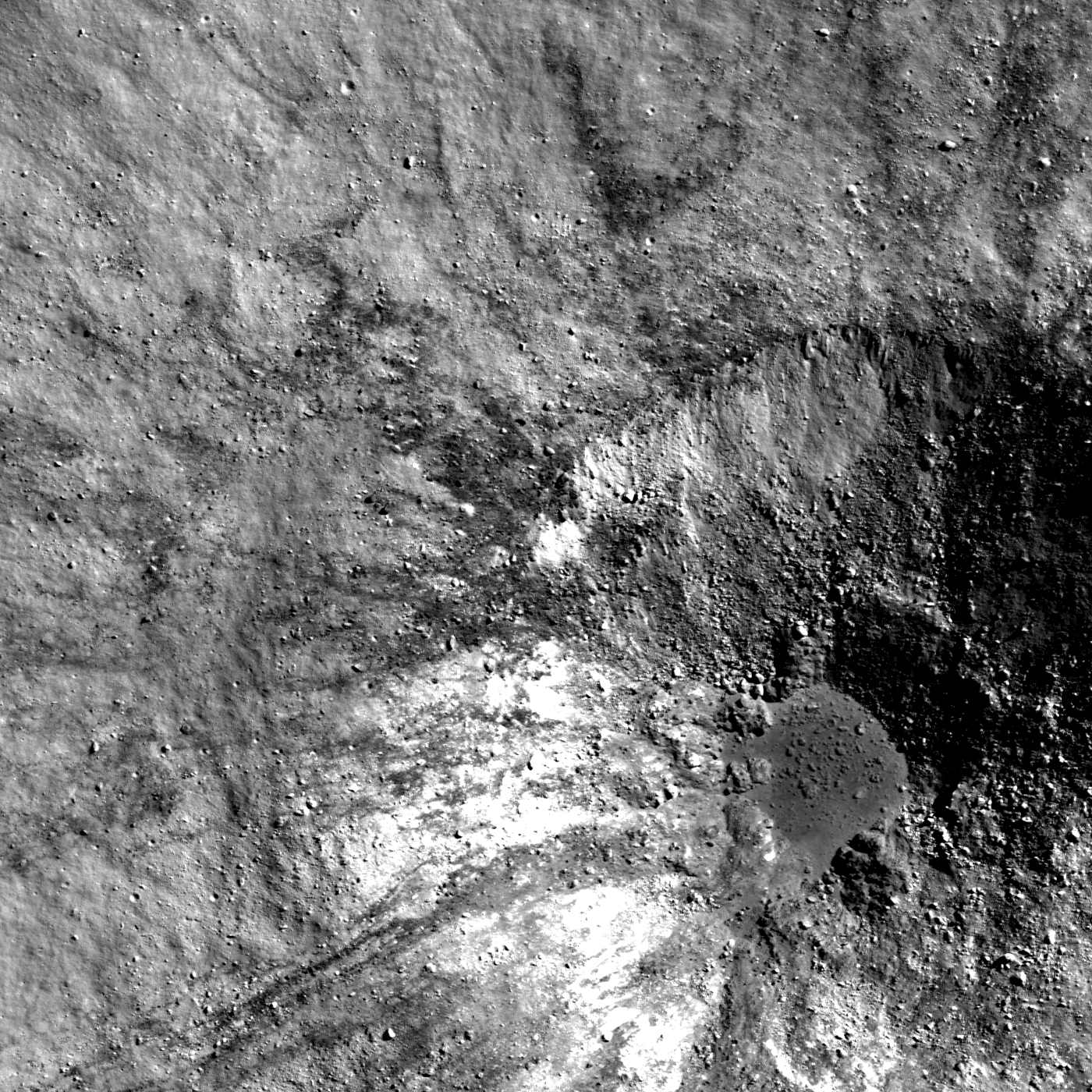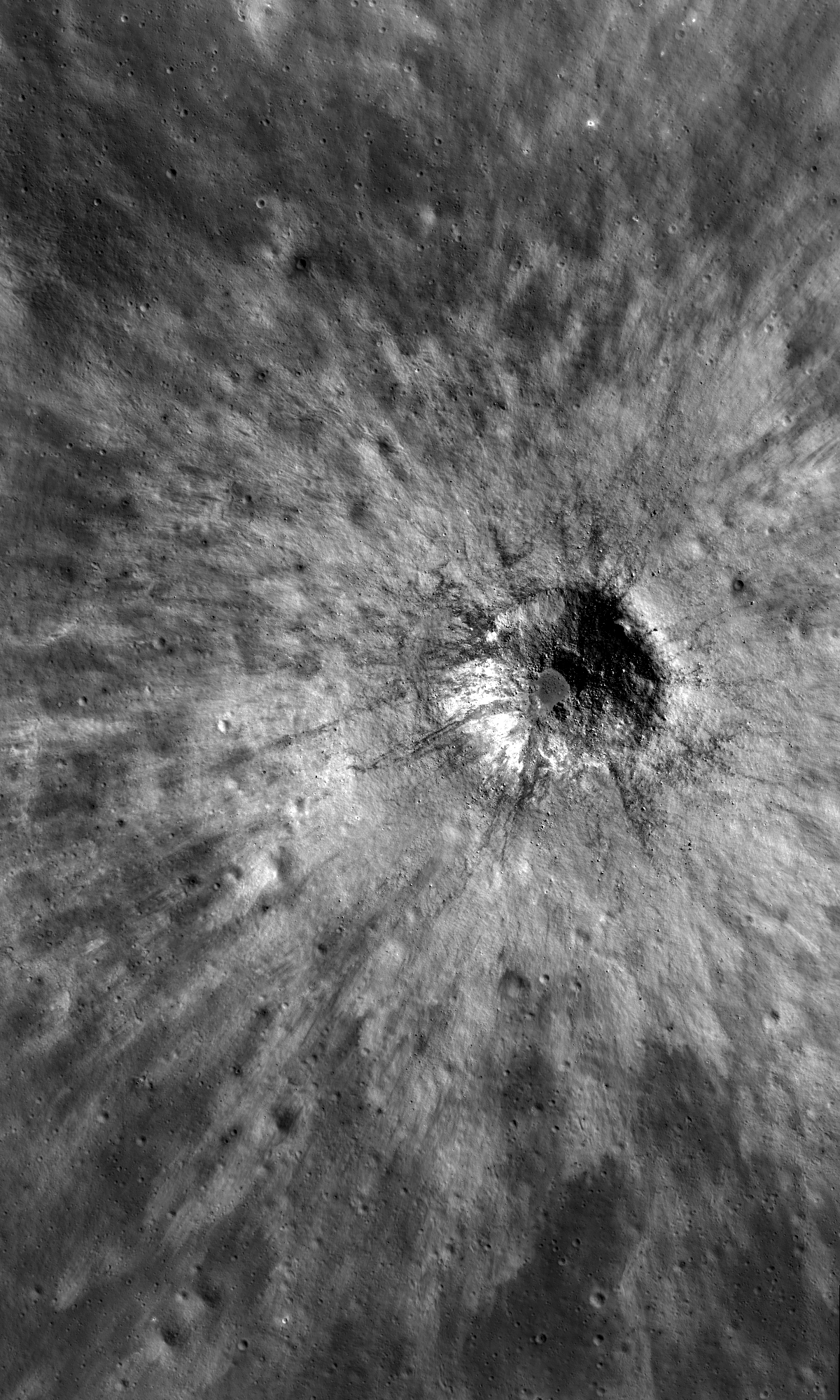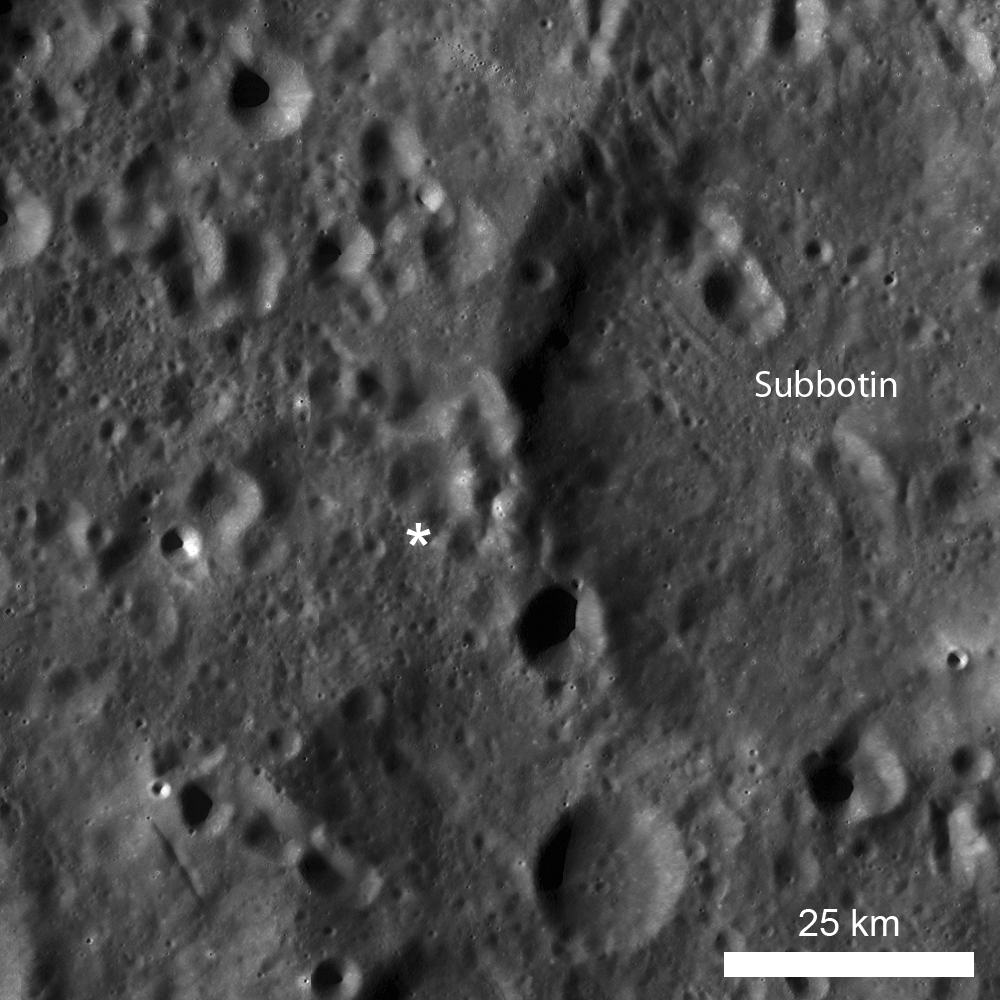
Young impacts abound on the Moon, and the LROC NAC images of beautiful crater morphologies, spectacular ejecta blankets, and stunning impact melt deposits are enough to make any lunar geologist jump for joy. Many times, fresh impacts into mare material are featured because these craters punch through the thin layer of regolith and produce boulders. However, impacts into the lunar highlands can be just as spectacular.
Today's Featured Image of an unnamed Copernican-aged crater (~630 m diameter, 29.73°S, 134.07°E) is one such example on the farside. Close-up, the crater is bowl-shaped with a well-defined circular rim. At the crater floor center is a small, bouldery pond of solidified impact melt. Debris from the crater walls have slumped toward the floor center, but whether these slumps happened immediately after crater formation or yesterday is difficult to determine. Take a look at some of the material nearest to the crater floor; in the crater center, some slumps are veneered with impact melt but other debris piles superpose (overlie) these veneered materials. These stratigraphic relationships can be used to interpret the relative ages of the slumps - the impact melt-covered piles formed soon after impact because they are splashed with impact melt, and the overlying debris piles happened after the impact melt solidified (maybe even yesterday!). Furthermore, the ejecta blanket closest to the crater rim is mostly uniform in reflectance but there are scatterings of boulders and lower-reflectance impact melt streamers that were thrown out of the crater during ejecta emplacement. What a beauty!
What other exciting geologic features do you observe when you explore the following full LROC NAC image?
Related Posts: Small crater at the southern rim of Menelaus
Smooth floor in Copernicus crater
Published by Lillian Ostrach on 29 September 2011

